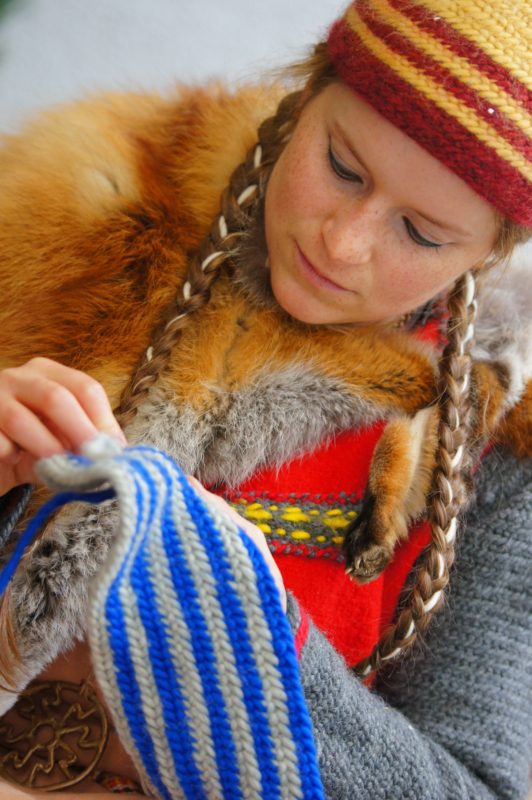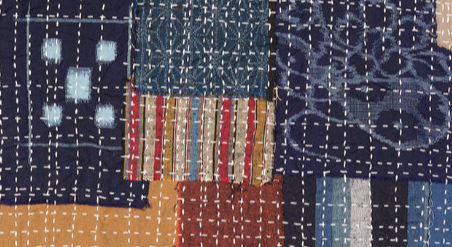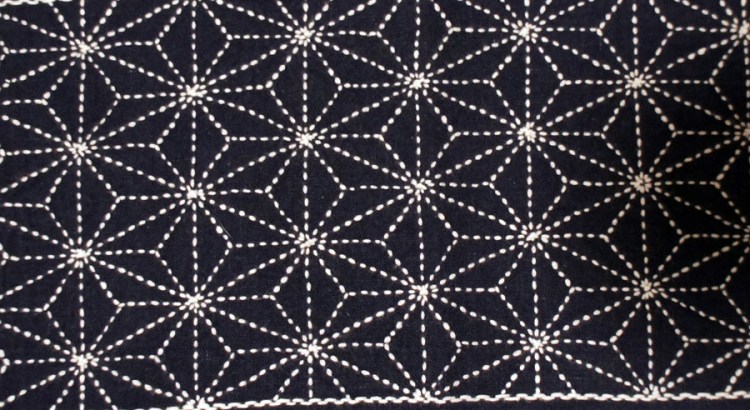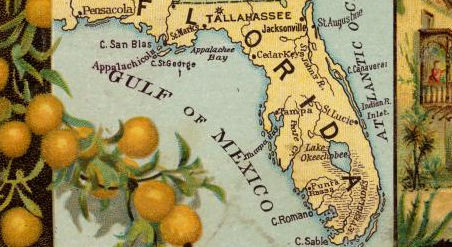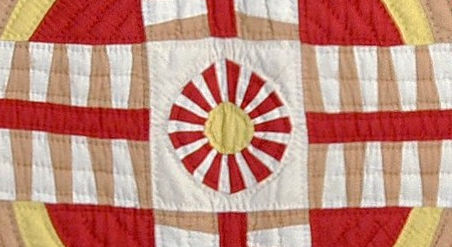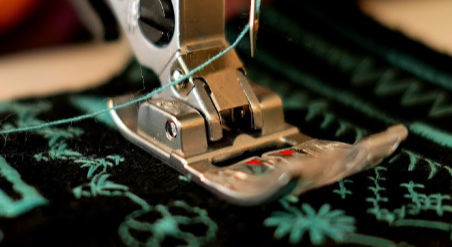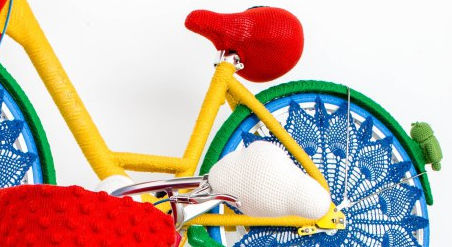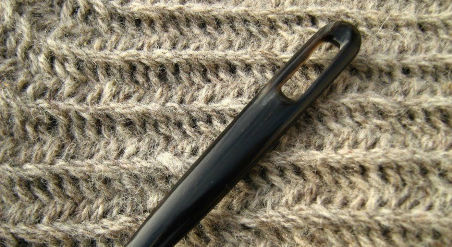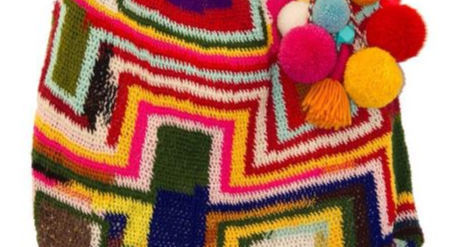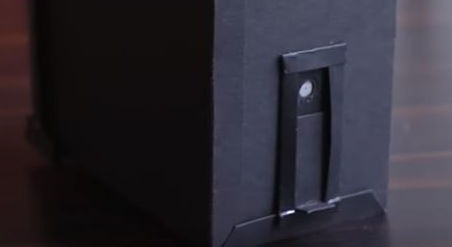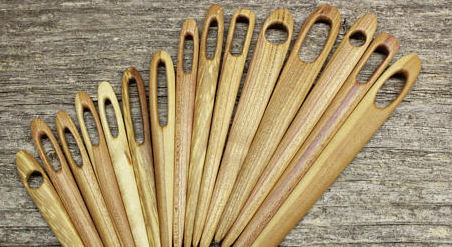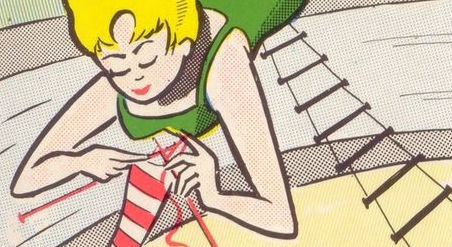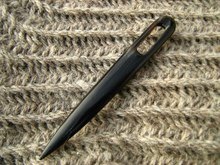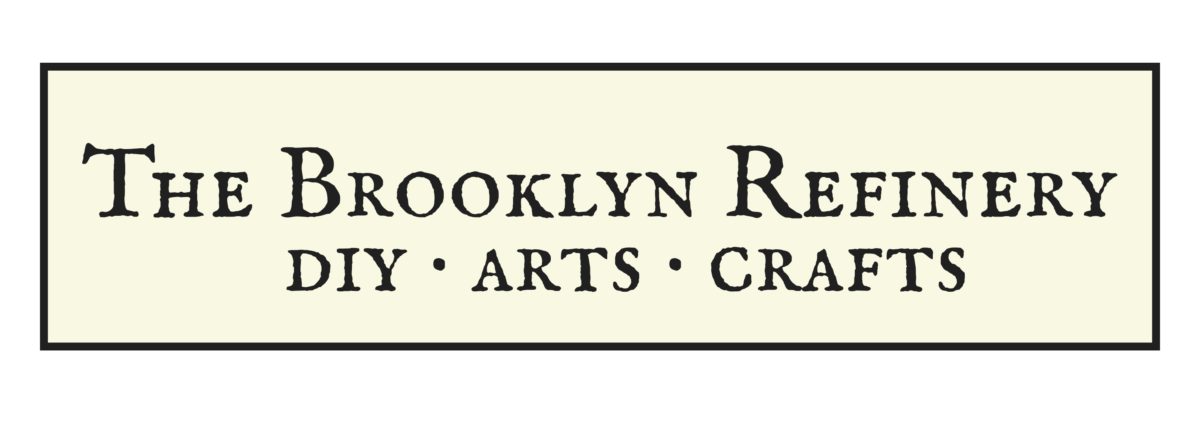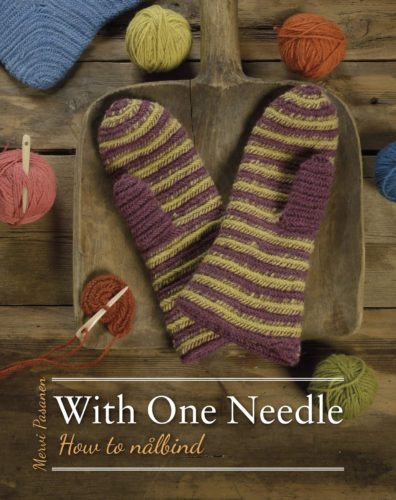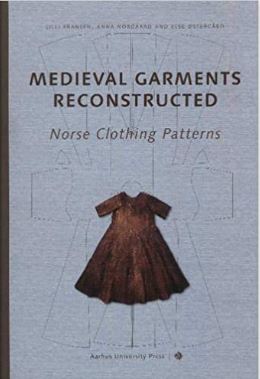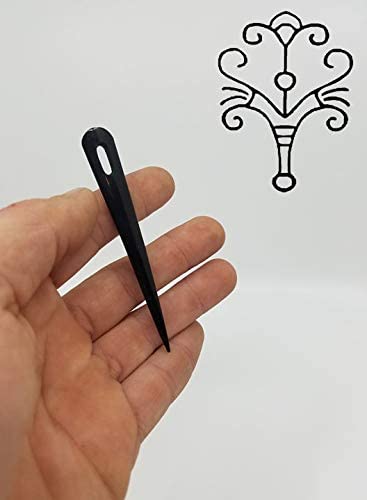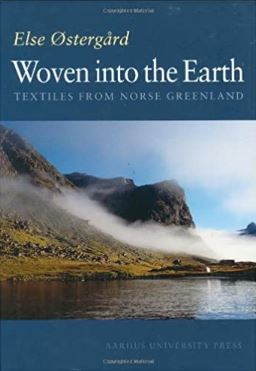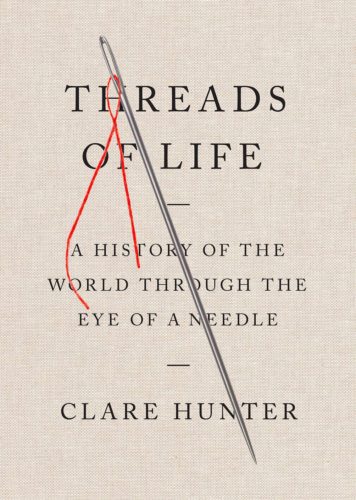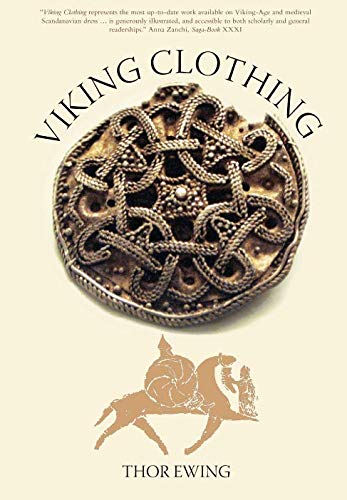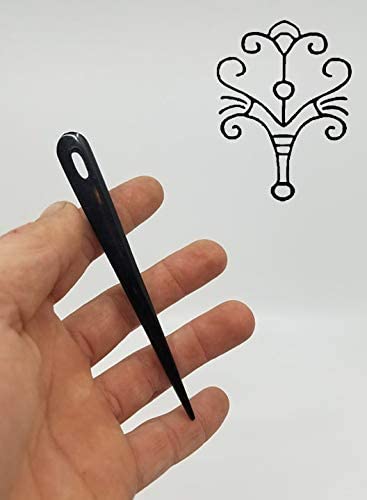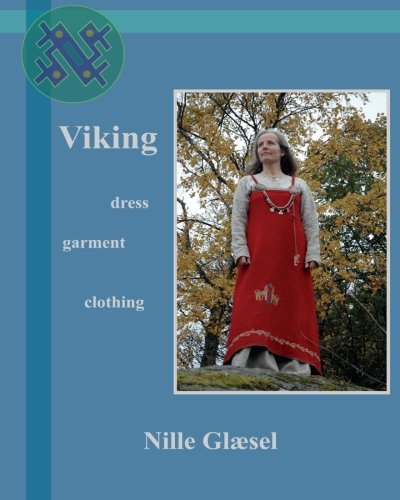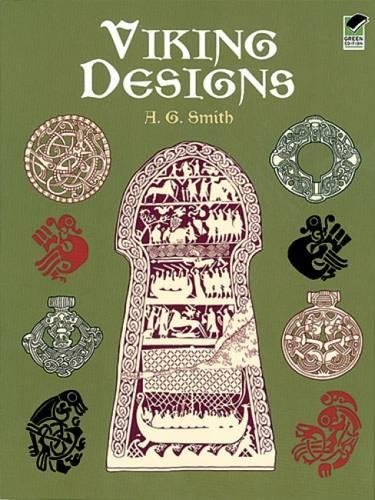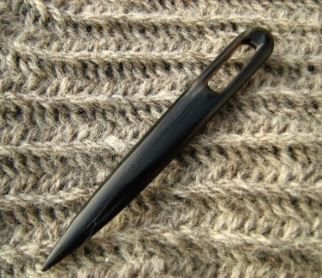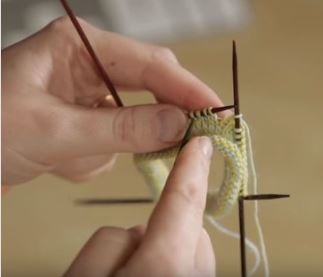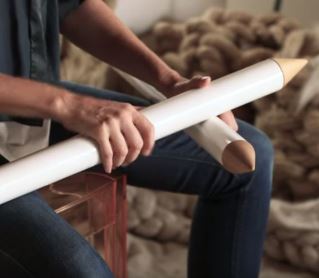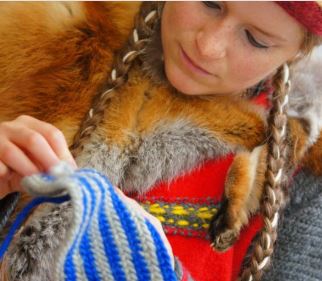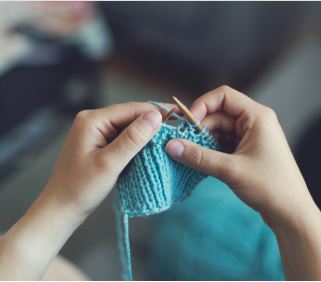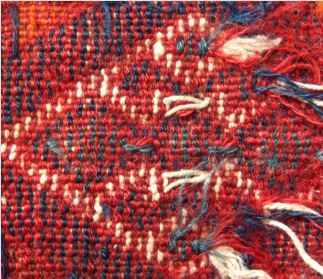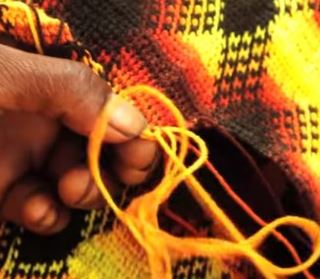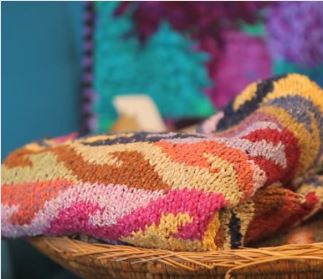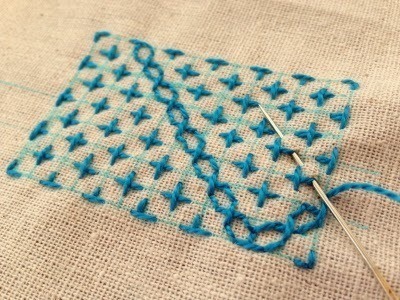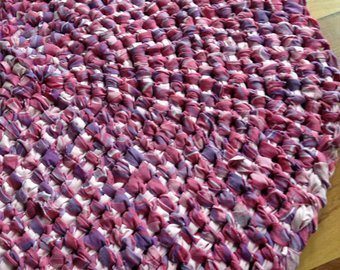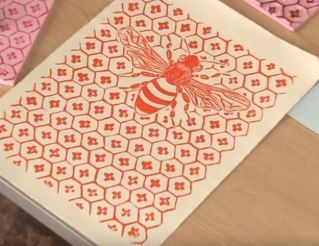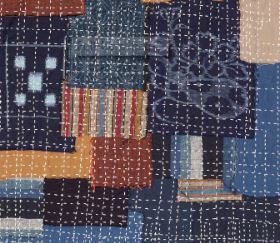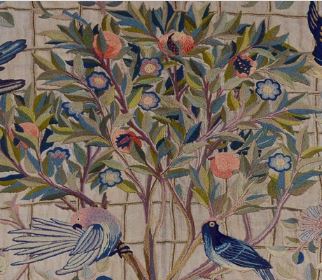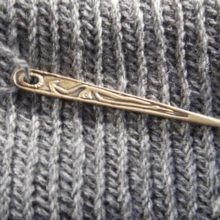Before There Was Knitting…
Before both knitting and crocheting, there was a thread technology technique with roots in Scandinavia, called Nålebinding. This form of stitching was used to create a stretchy fabric of connected loops that were crafted into items of clothing and other textiles.
Early nalbinding pieces from the Viking Age are from approximately 800-1066 C.E.
Nalbinding has an armload of other aka’s: Nalbinding, Nalbindning, Sprang, Nalbinding, nalebinding, nailbinding, nålbinding, and needlebinding.
In English this type of Scandinavian stitching is known as "knotless netting," "looped-needle netting," or "single needle knitting."
If you'd like to jump in and purchase a guide for the Nalbinding technique and Nalbinding needles, click here. (As an Amazon Associate I earn from qualifying purchases - at no extra cost to you.)
To see some examples of current nalbinding, search Pinterest or Google’s image search engine using these keywords: neulakinnas, neulakintaat, nalbinding, naalbinding, nailbinding, needle binding, nålbindning, nålbundet, nålbunden, nålbundna, söma vantar, nadelbinden, nadelbindung, naaldbinden, nålebinding, nalebinding, nõeltehnika(s), nõelkindad, nõelsokid, nõelkudumine, наальбиндинг, вязание иглой, игольная вязка.
The technique found its way from Scandinavia to the far reaches of the European world.
Nalbinding stitches are created with a single needle, using a series short lengths of yarn (18-36” pieces) at a time. Each newly formed loop is created when the tail end of the yarn is pulled completely through the added loop, making it unravel-proof.
The nalbinding technique dates back to at least the Viking Age in Scandinavia, as a way to use up the pieces of yarn that were left over from weaving. The weaving scraps would be used to make smallish items, such as socks, hats, caps, gloves, mittens, footwear, nets, strainers, sieves, carrying bags, and headwear.
They could be made using a variety of stitches (up to 1024 variations of stitches can be made) and yarn that could run the gamut from fine to coarse.
The socks pictured above are in London’s Victoria and Albert Museum, and are the earliest knitted items in their collection. They were made sometime between 300 and 499 AD, and were excavated in Egypt. The toes are separated so they can be worn with sandals.
There are many different types of stitches that can be made using single needle knitting- different varieties of stitches that create different patterns include Oslo, York, Korgen, Mammen, Dalby, Broden, Tarim, Coptic, Danish, Coppergate, Saltdal, Asle, Finnish, Russian, and Omani Stitches, as well as Simple Looping and Encircled Looping.
Some patterns give you a warm, thick layer of stitching. And, additionally, if oily yarn is used, the items can be water-proof.
Nalbinding needles have a hole in one end. Just like knitting, they need to match the thickness of the yarn being used. Most needles were traditionally made of bone and horn, and vary in length from 2.5 – 5 inches.
Copyright 2017 Gunnar Karro
Ultimately, nalbinding was cast aside for a new way of threading technology which was much faster and easier to learn, and which sprung from the Islamic countries around the Mediterranean: knitting.
Ready to see some nalbinding in action? You’ll see why the faster technique of knitting superseded nalbinding, but you’ll also appreciate this amazing Scandinavian stitching technique.
Here’s how to work a York stitch:
Nalbinding Tutorials and Guides
Sanna-Mari Pihlajapiha, a Finnish crafter, started nalbinding in 2009. Fortunately for us, she’s keeping this tradition alive, maintaining a website that covers the history of nalbinding, offers .pdfs that explain the techniques with drawings and photos, has comprehensive explanations of different types of stitches, and links to excellent tutorial videos with a voiceover in both English and Finnish.
You'll find lots of information about nalbinding on Sanna-Mari Pihlajapiha's website.
Scandinavian Pattern Directions
Pattern directions for nalbinding consists of O’s for go over, U’s for go under, and / to indicate that the direction of the yarn changes. Patterns will let you know how many times you’ll need to go over or under threads to make a stitch. Here’s the sort of over/under directions you’ll see in a nalbinding pattern: O/UO, UO/UOO, UOO/UUOO, OO/UUO, OOO/UUUO, and OOOOOO/UUUUUUO.
Fairly recently in nalbinding history there have been several stabs at creating a universal notation that maps out how to create nalbinding stitches for the purpose of writing patterns and directions.
A good description of these notations can be found on Sanna-Mari Pihlajapiha's website.
Below is a drawing of how to make a Dalby Stitch.
This is how an Oslo Stitch pattern is notated using Hansen notation: UO/UO O.
The arrows in the photo above indicate the direction of the worked yarn as per the notation given in a pattern, where a U indicates where the yarn goes Under the previously-worked loop, and an O indicates where the yarn goes Over the previously-worked loop. The / shows where the turning point of the stitch takes place. The final O is the final crossing of the working thread over itself.
Often projects will be done using a woolen type of yarn because of the methods used to join the strands together, which is a felting technique. Pure wool is ideal. However, some techniques have been created that make use of yarns that do not felt together for the joins.
Increasing and decreasing the number of stitches is the same as in crochet. When you need to add a stitch, you make that increase by threading through the same stitch one or more times. When you need to decrease the number of stitches, you do so by missing a stitch in the previous row.
You’ve come to the end of your piece of yarn, and you need to add the next bit. What do you do?
You split a couple of inches of your tail end in half. You do the same to the incoming thread. You should have 2 Y-shaped ends. You’ll fit those 2 Ys together, put a few drops of water onto the join, and roll the wetted thread pieces until they feel joined together as one.
Click over to dilettante.info to see a Basic Nålbinding part 1: Oslo Stitch (F1 UO/UOO) as taught by Gudrun Ottosdottir of University of Atlantia.
Below is a video tutorial for making a nalbinding Oslo stitch by Home With My Bookshelf:
Head over to our Pinterest board on nalbinding for more photos, links, and project inspiration. And check out some Nalbinding books and supplies by clicking on the images below, or head over to Amazon's Nalbinding page to see their Nalbinding books and needles. (As an Amazon Associate I earn from qualifying purchases - at no extra cost to you.)
Having fun with new and traditional crafts, art, design, DIY, and freebies.
HOW TO MAKE A BORO BAG Learn how to make a stand-out bag using a Japanese patchwork technique and Sashiko stitching.
MAGNETIC CLAY CERAMICS Ceramic artists working with magnetic clay can play with the forces of nature to create fantastical structures.


